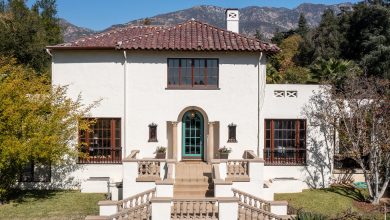3 Art Gallery Shows to See Right Now

Paul Thek
Through Oct. 16. Alexander and Bonin, 47 Walker St., Manhattan. 212 367-7474; alexanderandbonin.com.
The career trajectory of Paul Thek resembles an inverted bell curve: precocious success, midcareer neglect and bitterness, death from AIDS in 1988, and ever-building posthumous glory.
The mini-retrospective “Relativity Clock” samples aspects of the multifaceted artist, with notebook sketches that Thek made as a daily practice, paintings he created on newspaper, a couple of the “meat cables” that he strung up while living in Amsterdam, and paintings that he adorned with ultra-bourgeois gold artist’s frames and picture lights. The showstopper is a “technological reliquary” or “meat piece” — an object with an iridescent blue skin and an interior of mangled flesh displayed within a clear plastic container.
Thek shaped and colored wax to simulate chunks of raw meat, which he combined with steel, as in the cables, or more often enclosed in plexiglass boxes. As the name implies, the technological reliquaries placed visceral content in a rational vessel. In part, Thek was thumbing his nose at Minimalism. At the same time, a Roman Catholic religiosity, fusing spirituality with carnality, permeates much of his work.
At the end of the ’60s and early ’70s, he created a series of installations in Europe, crafting new pieces while the show was up, so that the exhibition kept changing in a way that now seems ahead of its time.
But his most legendary show was staged earlier, at Stable Gallery in New York in 1967. It featured a wax cast of his body in a suit, painted pink, with a blackened tongue and a cutoff right hand, housed in a ziggurat. He called it “The Tomb,” although to his displeasure it became known as the “Death of a Hippie.” (Like its creator, the effigy had long blond hair.) The hippie perished, but in the current exhibition, the Stable show is represented by photographs and a poster made by Peter Hujar, who was Thek’s lover at the time, and is another artist whose reputation has soared since his premature death in 1987.
ARTHUR LUBOW
Julia Bland
Through Oct. 9. Derek Eller Gallery, 300 Broome Street, Manhattan. 212-206-6411; derekeller.com.
Looking at Julia Bland’s artworks up close can be a little adventure. In one piece — for example, “Canyon” (2020), in her current exhibition at Derek Eller Gallery — you might find hand-woven linen alongside premade denim, silk, and a repurposed Hudson Bay coat, with ink and paint applied to various fabrics, all of which have been cut, stitched, woven or braided together. Your eye can get caught up in an aesthetic treasure hunt, marveling at how many textures, colors, shapes, and processes can comfortably coexist.
Bland, who studied painting and printmaking in bachelor’s and master’s programs, has been making collagelike textile works for several years. For her first solo show at Derek Eller, titled “Some Love Holds Water,” she’s scaled up in both size and complexity, with three monumental pieces (including “Canyon”) presiding over the main gallery space. They’re the undeniable stars of the exhibition, ambitious formal experiments that merge elements of Western fiber art, traditional Islamic textiles, modern abstract painting and more.
Unfortunately, the rest of the show suffers a bit by comparison: Three small drawings made with linen thread and oil paint and a series of linen and wool blankets start to look tame. But those pieces still capture some of the totemic quality that makes the larger trio so enthralling. The geometric shapes at the core of Bland’s work and her iterative layering and riffing on them radiate a kind of psychedelic power. You don’t need to know their precise meanings to feel it.
JILLIAN STEINHAUER
McArthur Binion
Through Oct. 23. Lehmann Maupin, 501 West 24th Street, Manhattan. 212-255-2923; lehmannmaupin.com.
Born in Mississippi and raised in Detroit, McArthur Binion followed the Black avant-garde to New York in 1973. In ’91, he followed a woman — and a teaching job — to Chicago. All along he also kept an address book stuffed with the names of fellow artists, many later famous. In 2013, he started using this book, along with his birth certificate, found photos of lynchings and other personally resonant documents, as grounds for minimal paintings. He’d cut color photocopies of the papers into 4-inch squares, lay out the squares like tiles and cover each one with an oil-stick grid.
For the most part Binion let this work tilt toward the conceptual. He used somber colors that didn’t distract from the heady idea of attaching the personal to the universal, of underlining his identity on a gallery wall even while striking it through. But the nine large paintings of “Modern: Ancient: Brown” — among the last of his “DNA series,” which he declared finished in 2020 after more than 250 paintings and prints — use color with glorious abandon. Primaries and secondaries shimmer across an expanded address book like fairy lights. On the paintings that use a relatively dark repeating headshot, or Binion’s birth certificate printed in white on black, the same colors sink but don’t fade. Two black-on-black pieces, meanwhile, bring concept and practice to equal heights — they’re equally absorbing to look at or think about.
WILL HEINRICH




